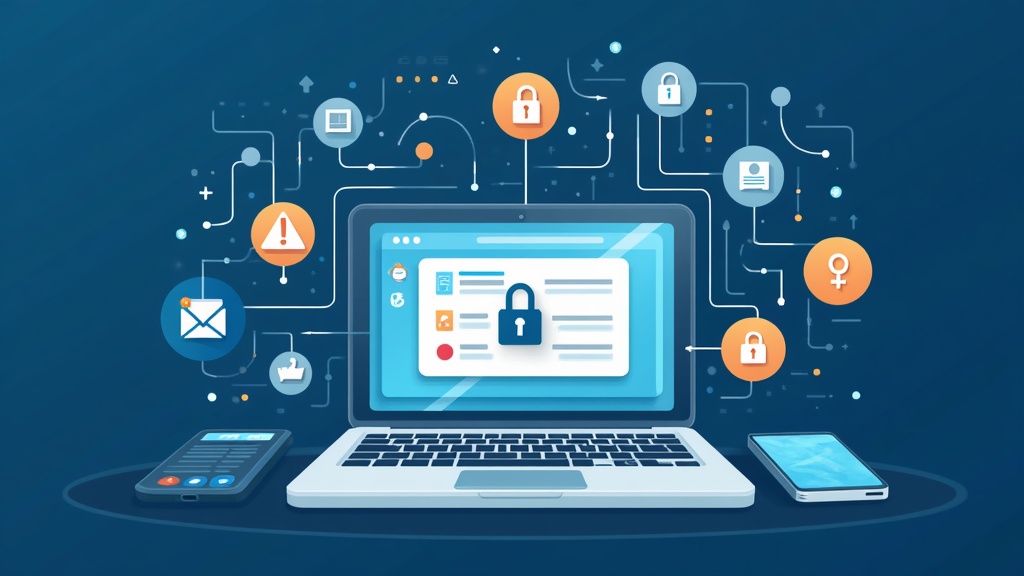If you’re watching the calendar and feeling unsure about the future of your nest egg, you’re not alone. Many people reach a point when they realize their retirement plan needs more attention. Sometimes, what worked before might not be enough now. Markets switch up, costs rise, and personal goals can change over time. If you act early and adjust your plan, you may find more confidence and flexibility as you look toward retirement. Based on what I’ve learned working with savings plans and reviewing the latest trends, I know that making changes now can have a real impact down the road.

Why Repositioning Your Retirement Plan Matters
A retirement plan you set up years ago was probably designed for your life as it was at that time. Maybe you picked investments based on what your friends recommended, or you followed a popular blog’s advice. As the years move on, it’s really important to make sure your plan keeps up with your current situation.
Markets often change quickly. The 2020s have seen economic swings, inflation spikes, and some bumps in the job market that catch many people off guard. According to the Federal Reserve’s most recent survey, many Americans feel less prepared for retirement than ever before (source). I’ve seen how a quick review and update of investment options, debt, and savings vehicles can help reduce a lot of that uncertainty.
Repositioning your plan also means thinking about how much risk you’re really comfortable with now, not ten years ago. A more flexible strategy can weather economic ups and downs better. If you’re ten or even twenty years from retirement, tweaks you make now will have more time to grow and offset any rough patches. Plus, staying sharp by regularly reviewing your approach helps you spot opportunities and challenges before they sneak up on you.
Steps to Take If You Need a Retirement Checkup
If you want to strengthen your retirement future, starting with a clear review of where you stand today is the first move. I always begin by looking at account statements, insurance policies, and monthly expenses. If you’re not sure how to break it down, here’s a simple checklist I find helpful:
- List your accounts and current balances: IRAs, 401(k)s, Roth accounts, regular savings, and pension statements.
- Check your monthly expenses: Tally up recurring bills, subscriptions, health care costs, and any debts.
- Estimate your expected income in retirement: Include Social Security, rental income, and pensions.
- Review your investment mix: Are your accounts too heavily weighted toward stocks or bonds?
Once I have this snapshot, I take a closer look at upcoming milestones. Are you planning to retire early, or keep working parttime? Have any big changes in the family, health, or housing plans cropped up recently? This all affects how much you might need to adjust. Stay flexible and willing to mix things up as your life situation changes.
Smart Ways to Reposition Your Retirement Plan
When I’ve helped friends or clients refresh their plans, I notice a few areas that often need extra attention. Sometimes, making even small adjustments can create better results in the future.
- Review Your Investment Choices: Over time, an account may drift from its original mix. I usually rebalance my own accounts once or twice a year. This helps me avoid too much risk as I get closer to retirement and helps lock in gains when markets perform well.
- Look for Hidden Fees and Costs: It’s easy to overlook expense ratios, trading fees, or account management costs. A difference of half a percentage point in fees across several years adds up fast. I take a careful look at all my accounts and cut out expensive funds when I find them.
- Consider Tax Efficiency: Where you keep your investments can have a solid impact on after-tax results. For example, using Roth IRAs for growth investments and placing bonds in taxdeferred accounts can improve net returns. I organize my savings so that withdrawals create the lowest possible tax bills.
- Increase Contributions If You Can: If you receive a raise or finish paying off a debt, boosting your retirement contributions can be a smart move. Most plans allow you to automate increases. I set reminders on my calendar to review and bump up my contributions each year.
You might also think about working with a financial professional who can give a once-over to your plan and spot things you might have missed. Asking questions and sharing concerns can open up strategies you haven't considered yet.
Common Challenges When Repositioning Your Retirement
It’s normal to face a few obstacles when you make changes to a retirement plan. I used to feel a bit overwhelmed with all the options, but splitting things into bitesize pieces helped. Here are some typical issues people run into:
- Market Volatility: Changes in the economy and investment markets can make it tempting to react too quickly and switch out of stock funds during a downturn. I remind myself to stay focused on my real goals and timelines. Shortterm market dips often recover in time.
- Not Knowing Where to Start: Reviewing every account and calculating income needs can sound like a huge task. I usually just start by checking the most recent account statement and working out from there.
- Juggling Debt and Savings: Some people worry that higher interest debt will eat into savings goals. I approach this by prioritizing highinterest debt first and then setting a comfortable automatic savings rate.
Market Volatility and Staying on Track
I remember talking to a neighbor during a market drop in 2022. He considered cashing out his accounts entirely. We went over his longterm needs, and after taking a breath and reviewing the bigger picture, he decided to keep a balanced approach. Usually, weathering a turbulent market works out better if you don’t let shortterm fear take control.
Managing Debt While Saving
Dealing with student loans, credit cards, or even mortgages can be tough. I focus on minimizing highinterest debt before putting more into lowerreturn investments. For example, after paying off my car loan, I immediately redirected that monthly payment into my retirement savings. This method built momentum for my longerterm goals without feeling like a sacrifice.
Understanding Tax Strategies
Tax planning sometimes feels confusing at first, but it can increase your savings with just a little effort. Contributions to retirement plans like 401(k)s can lower taxable income now, while Roth accounts give future taxfree withdrawals. I meet with a tax adviser occasionally just to make sure my approach lines up with the most current tax rules.
If tax rules change, don’t be afraid to check in with an expert or use online resources. Staying sharp about taxes can keep more money in your pocket over the years.
Advanced Tips for Reshaping Your Retirement Plan
If you’re feeling confident about the basics, you might be ready to try some advanced strategies. These can bring more security and flexibility as you get closer to retirement.
- Create Buckets for Retirement Income: I divide my assets into shortterm, mediumterm, and longterm “buckets.” Cash covers 12 years of regular expenses, conservative bonds handle years 310, and growth investments serve the longer time horizons. This makes it easier to weather a bad market year without selling growth assets at a loss.
- Explore Alternative Investments: Some people switch things up with real estate, annuities, or alternative funds. I added a small real estate investment trust (REIT) to my own mix to spread out risk while aiming for longterm returns.
- Delay Social Security If Possible: Each year you delay benefits past age 62, the payout goes up. If you have enough savings, waiting until full retirement age or later may boost your eventual income. I personally use the Social Security Administration’s online calculator to model different scenarios.
Building in these ideas early gives you more ways to adjust if things change in the future. It’s all about staying in control and having options at every stage of your retirement adventure. You can also check out educational podcasts, join retirement forums, or even attend a local seminar to keep learning.
Key Financial Tools to Support Your Retirement Shift
Using the right accounts and resources can really smooth out the process. Here are a few I rely on and often recommend to others:
- Roth IRA: Allows taxfree withdrawals in retirement. I opened mine early to take advantage of decades of growth.
- Health Savings Account (HSA): Lowers today’s taxes and grows taxfree for health care costs. If you have a highdeductible insurance plan, I find this tool super handy for future medical needs.
- Employer 401(k) or 403(b): Offers matching funds from many employers. That’s basically free money, so I make sure to contribute enough to get the full match.
- Investment Tracking Apps: Using apps to monitor asset allocation and progress toward goals makes it easier to stay on top of things. I check my dashboard a few times a month so I don’t miss any drift or issues.
If your workplace offers educational sessions or access to a financial adviser, make use of those resources. Even a quick conversation can spark ideas you hadn’t considered. Also, don’t overlook online calculators and portfolio trackers for extra insights.
Frequently Asked Questions About Repositioning for Retirement
Question: When should I start reviewing my retirement plan?
Answer: I think the best time is right now, no matter your age or career stage. Regular checkups, at least once a year, build strong habits and help catch issues early.
Question: What if my employer stopped offering a retirement match?
Answer: I’d look into increasing contributions to an IRA or a Roth IRA. You can also speak with a financial planner about possible rollover options or higher savings targets in other accounts.
Question: Can I really recover if I’m behind on savings?
Answer: While it’s not always easy, I’ve witnessed people catch up by increasing contributions, trimming expenses, and using catchup contributions allowed in many retirement plans for those over 50.
Take Action Sooner Rather Than Later
Making changes and taking control of your retirement plan may sound like a tall order, but even small steps can make a big difference over time. I’ve found that regular checkins, a willingness to adjust, and taking advantage of helpful tools can ease a lot of stress. The earlier you start, the more options and flexibility you’ll have. With some focused effort now, you’re better positioned for the retirement you want, and you’ll have more time to enjoy it your own way. Remember, prepping your retirement isn’t just about numbers; it’s about setting yourself up to enjoy your life with freedom and peace of mind. Time to roll—get started today so your future self can thank you.

 AI impersonation is showing up everywhere lately, from sneaky scam calls to convincing fake social media accounts. With AI-powered tools getting smarter each day, it’s easier than ever for someone to use them to pretend to be someone else and trick people, businesses, or even whole communities. This is more than just a simple scam; AI impersonation has the potential to mess with personal security, reputations, and even financial stability if you aren’t paying attention.
AI impersonation is showing up everywhere lately, from sneaky scam calls to convincing fake social media accounts. With AI-powered tools getting smarter each day, it’s easier than ever for someone to use them to pretend to be someone else and trick people, businesses, or even whole communities. This is more than just a simple scam; AI impersonation has the potential to mess with personal security, reputations, and even financial stability if you aren’t paying attention.
 just sharing the article from Public Bank Malaysia on online scam and how to protect yourself
just sharing the article from Public Bank Malaysia on online scam and how to protect yourself
